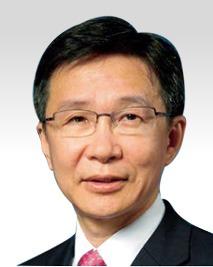A Hong Kong expert in health care management saw a rosy picture of medical collaborations in the Guangdong-Hong Kong-Macao Greater Bay Area, which ultimately will benefit cross-border patients and travelers seeking medical help.
“Hong Kong’s leadership role on the world map in medical care services, development of international perspectives, alignment with international standards and practices, together with people’s agility, have made the SAR different,” remarks Fung Hong, executive director and chief executive officer of CUHK Medical Centre. Fung told China Daily before the Greater Bay Area Conference, themed on GBA: The Way Forward, which was held on Nov 18. The conference was co-organized by China Daily.
 Fung Hong
Fung Hong
Fung was convinced that these strengths, if fully leveraged in medical partnership with mainland cities, including regions within the Bay Area, will bring about tangible benefits for patients from two sides and invigorate cross-border endeavors toward medical innovation breakthroughs. He has spearheaded the development of the Hospital Authority’s Clinical Management System, which is the city’s largest integrated electronic medical and patient record system.
Complimentary relationship
Hong Kong has established international reputation in many areas of medicine, which in particular is attributed to the excellence of the two medical schools (the Li Ka Shing Faculty of Medicine, University of Hong Kong and the Faculty of Medicine, Chinese University of Hong Kong), added Fung.
The HKSAR has been making all-out efforts to ensure quality medical care and high specialist qualifications at the par with the international standards.
“The Hong Kong Academy of Medicine was set up to oversee the training of specialist doctors, to set standards, and to run examinations for specialists. The Hong Kong Medical Council maintains a Specialist Registry based on recommended qualifications of HKAM.
Starting 2021, the HKSAR government will implement new licensing requirements for the private hospitals under a new ordinance. This will go a long way to ensure quality systems are set up in the private hospitals similar to the public hospitals,” said Fung.
ALSO READ: Vice-premier stresses education, healthcare for Greater Bay Area
All the flying colors are a testament to Hong Kong’s well-established, robust and tested-and-proven medical care framework and system, which will serve as a handbook in GBA collaboration.
Medical institutions and practitioners in the Chinese mainland also have a leg up on certain areas, which will complement Hong Kong’s inadequacies and advance the Bay Area’s crusade for synergy in medical cooperation.
Hospitals and professionals in the Chinese mainland are largely working in the public sector serving the local population, in a situation very similar to the Hospital Authority, noted Fung. “In recent years, the government has developed strategies to promote the development of private health care in the mainland so as to complement the public sector. The private sector can certainly play a pivotal role in building the bridge between Hong Kong and other regions in the Bay Area.”
Clearing the way for cooperation
The quest for synergy will not be without bumps. “It requires collaboration and close partnership among payers and providers to cross barriers and overcome obstacles. These barriers are many, including regulations, financing, people, data, drugs and products, and so on,” reckoned Fung.
Fung was also one of the initiators of electronic patient records system, or eHR, which has benefited 60 percent of patients in Hong Kong. The adoption of eHR dramatically saves patients’ time and money as they are spared from taking repeated medical tests and examinations. The system also ensures doctors to make accurate diagnosis and prescriptions as they can access the patients’ medical record and histories, which counts a lot in their clinical assessments and decisions.
READ MORE: Hong Kong doctors called to help in Bay Area
It will be difficult to allow borderless connection and sharing of medical records due to data privacy concerns and regulations under different jurisdictions, contended Fung. However, “it is possible to enable sharing if the medical records are owned and carried by the patients themselves. Today’s technology allows patients to keep their own medical records in a cloud and exercise control over the access of medical records controlled by themselves,” he said. “Block chain technology may also help to address some of the data privacy issues.”
Medical collaboration in the Bay Area could be riddled with challenges due to a selection of differences and discrepancies. “From our responses and research on treatment in COVID-19, the major differences may not lie in the medical field, but more on system and culture,” said Fung. “We just need more exchanges.”


